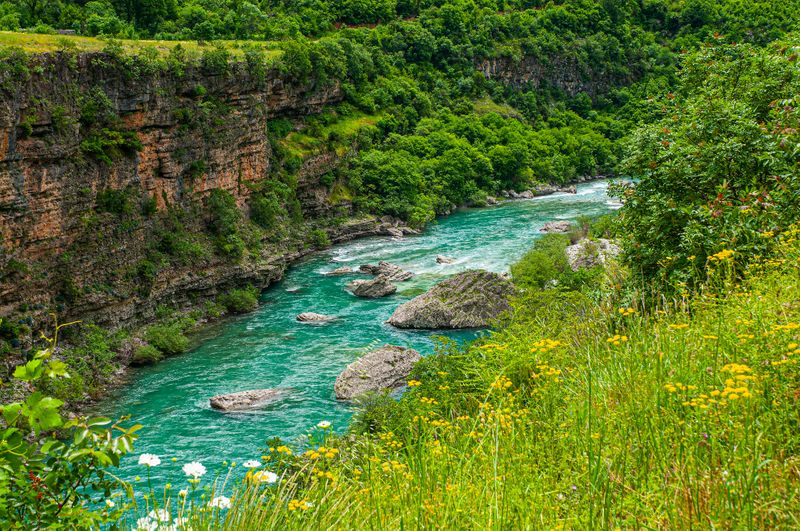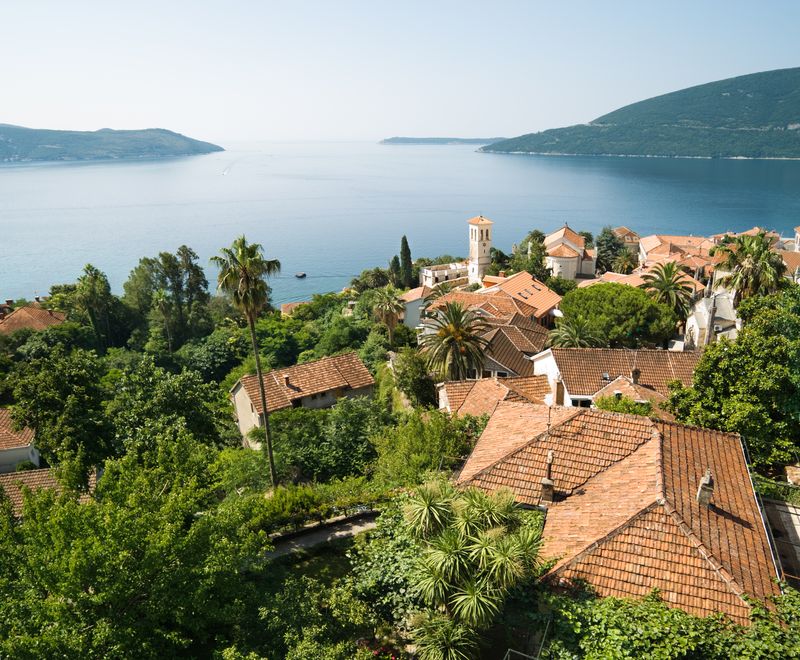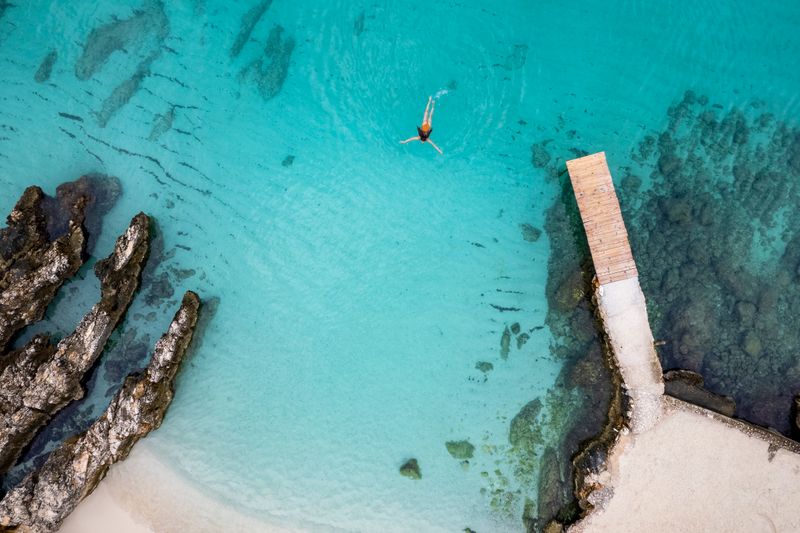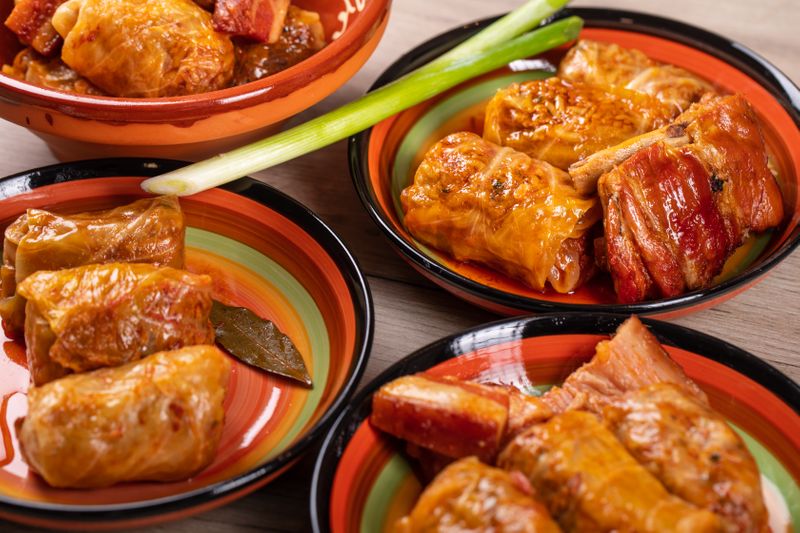Dreaming of an affordable European adventure rich in history, wild scenery and famously warm hospitality? Our Balkans travel guide answers the questions first-time visitors ask most, from costs and routes to culture shocks, so you can roam with confidence.
The region is home to more than a dozen countries, each with its own language, culture, and pace. That variety is exactly what makes the Balkans so special. One moment, you're walking past Venetian palaces on the Croatian coast. The next, you're sipping strong coffee in a Bosnian bazaar or hiking through the pine forests of Montenegro. There’s no single version of the Balkans, and for first-time travellers, that means every day holds something new.
This Inspiring Vacations guide is here to help you feel prepared, not overwhelmed, as you take your first steps into one of Europe’s most rewarding and diverse regions.
Where exactly are the Balkans?
The Balkans (or Balkan Peninsula) refers to a region in southeastern Europe that includes countries like:
- Albania
- Bosnia and Herzegovina
- Bulgaria
- Croatia
- Greece (partially)
- Hungary (partial)
- Kosovo
- Montenegro
- North Macedonia
- Romania (sometimes included)
- Serbia
- Slovenia
- Turkey (European side)
These are often referred to collectively as the Balkan countries, although definitions vary. What unites them is a shared geographic and historical identity, shaped by centuries of Slavic, Ottoman, Mediterranean and Austro-Hungarian influence. The result is a vibrant mix of cultures, cuisines and architectural styles that change with every border crossing.
Did you know?
The term "Balkan" comes from the Turkish word for "mountain, " which is fitting, considering how much of the region is shaped by its rugged terrain. While definitions vary, most modern references list ten core nations—Albania to Slovenia—with pockets of Greece and European Türkiye inside the peninsula’s boundaries.
Why first-timers love Balkans travel
There’s a reason so many travellers fall in love with the Balkans on their first visit. The region wears its history openly, with ancient ruins and UNESCO-listed landmarks sitting side by side with lively, modern cities. It’s a place where the past is never far from the present.
If you’re drawn to nature, the Balkans deliver in spades. From glassy lakes and forested valleys to quiet coastlines and rugged mountain passes, the scenery is as varied as it is stunning. And while the experiences are rich, the cost of travel is often far lower than in Western Europe. You can stay comfortably, eat well, and explore deeply without stretching your budget.
What really stays with people, though, is the warmth. A home-cooked meal. A friendly chat in the market. A glass of rakija shared with a smile. The hospitality here feels genuine.
It’s also a region made for movement. Distances are manageable, borders are easy to cross, and overland travel opens up a patchwork of cultures, cuisines, and languages. Each country has its own rhythm and charm, and discovering those contrasts is one of the great joys of a Balkan holiday.
Local travel tips for your Balkans trip
Travel in shoulder season: Late spring or early autumn offer the best mix of weather and lower prices.
Use offline maps: Navigation can be patchy in rural areas.
Respect local customs: Learn a few words in the local language. It is always appreciated.
Stay flexible: Bus delays, road works or sudden weather shifts happen. The magic is often in the unexpected.
Why visit the Balkans?
- Rich and layered history: From Roman amphitheatres and Byzantine monasteries to Ottoman mosques and Cold War monuments, the Balkans are a living museum. Cities like Sarajevo, Split and Belgrade tell complex stories through every alley, square and skyline.
- Natural beauty: Think glacial lakes in Montenegro, waterfalls in Bosnia, hidden beaches in Albania and karst mountains in Croatia. The landscapes here are raw, diverse and deeply photogenic.
- Affordability: For budget-conscious travellers, the Balkans are a gift. Prices for food, accommodation, and activities are often half what you'd expect in Western Europe. Eurostat shows that Bulgaria’s prices sat 40% below the EU average in 2024, and candidate countries such as Albania and Serbia track similarly low prices, so your travel dollar stretches further.
- Warm, unfiltered hospitality: Locals in the Balkans are famously generous. It’s not unusual to be invited for coffee, a home-cooked meal or a glass of rakija by someone you’ve just met.
- Culinary variety: The food here is rustic, regional and deeply satisfying. Expect fresh cheeses, slow-cooked meats, flaky pastries, local wines and seasonal produce, all rooted in centuries of culinary tradition.
- Adventure and diversity: The Balkans are ideal for hiking, cycling, rafting, skiing and wild swimming. You can go from snow-covered peaks to the sea in one single day.
Unmissable sights in the Balkans
The Balkans are packed with places that make a lasting impression. From iconic landmarks to lesser-known marvels, every corner of this region offers something visually or historically unforgettable. In Croatia, the walled city of Dubrovnik rises dramatically above the Adriatic, offering sweeping sea views and centuries of history in its cobblestoned streets. In Bosnia and Herzegovina, the Stari Most (Old Bridge) in Mostar draws visitors with its elegant arch and poignant symbolism. Over in Montenegro, the fjord-like Bay of Kotor winds between steep cliffs and charming villages, while Albania’s Gjirokastër reveals a living history lesson in stone with its Ottoman-era houses and hilltop fortress.
Serbia’s Kalemegdan Fortress provides panoramic views where the Sava and Danube rivers meet, while North Macedonia’s Lake Ohrid offers a tranquil retreat framed by ancient monasteries and crystal-clear waters. In Bulgaria, the Rila Monastery dazzles with its vibrant mosaics and mountain setting. Further south, Albania’s Butrint is a multi-layered archaeological site and UNESCO World Heritage treasure, where Greek, Roman, Byzantine and Venetian ruins co-exist within a lush wetland reserve.
Top unmissable sights in the Balkans:
- Dubrovnik, Croatia: Medieval walls, baroque architecture and sparkling Adriatic views
- Stari Most, Mostar (Bosnia and Herzegovina): A stunning 16th-century bridge with a story of destruction and rebuilding
- Bay of Kotor, Montenegro: A winding coastal gem with Venetian towns and mountain backdrops
- Gjirokastër, Albania: Stone rooftops, Ottoman mansions and castle ruins
- Kalemegdan Fortress, Belgrade (Serbia): Strategic views and layers of military history
- Lake Ohrid, North Macedonia: Clear waters, historic churches and peaceful shores
- Rila Monastery, Bulgaria: A colourful Orthodox complex in a spectacular alpine setting
- Butrint, Albania: Ruins that tell the tale of empires past, surrounded by wildlife and lakes
Did you know?
Many of the Balkans' most beautiful sights are still relatively crowd-free. Travelling with a local guide gives you access to places and stories that aren't always in the guidebooks.
Best Balkan countries for first-time travellers
Choosing where to go in the Balkans for your first trip can be a challenge. Here’s a breakdown of top picks based on interests:
Croatia: Great for coastal towns, island hopping and UNESCO cities like Dubrovnik and Split. It is more developed for tourism and easier to navigate.
Montenegro: Ideal for nature lovers and scenic road trips. Highlights include the fjord-like Bay of Kotor, the peaks of Durmitor, and the untouched villages of the north.
Bosnia and Herzegovina: A powerful blend of East and West. Sarajevo’s layered history and Mostar’s iconic bridge offer something unique and moving.
Albania: Still off the main tourist radar, Albania delivers wild beaches, Alpine valleys and friendly small-town hospitality. Infrastructure is improving, but the charm lies in its rawness.
North Macedonia: A cultural crossroad. Skopje is quirky, while Lake Ohrid is serene and steeped in ancient history.
Serbia: Often overlooked, Serbia delivers big-city buzz in Belgrade, monastic calm in the countryside and excellent food and nightlife.
What to expect in the Balkans as a first-time visitor
Travelling through the Balkans can feel like a trip through time and across several distinct cultures. Here’s what to prepare for:
- Cash culture: Cards aren’t accepted everywhere. Bring local currency and keep small change for buses, cafes and tips.
- Languages change quickly: Serbian, Albanian, Macedonian, Croatian, Slovenian and more. English is common among younger people, especially in cities.
- Smoking is common: Be prepared for smoke indoors in some bars and cafes.
- Buses over trains: Intercity travel is often by bus. Trains exist, but are slower and less frequent.
- Roads vary: Highways are decent, but rural roads can be rough. If driving, plan for longer than online estimates suggest.
Is the Balkans safe for tourists?
The Balkans are generally very safe for travellers. Petty crime is uncommon, and violent crime rates are lower than in many Western destinations. Common sense goes a long way.
Safety tips:
- Avoid unlit streets late at night
- Keep cash and passports secure
- Use licensed taxis or ride apps like Bolt
- In rural areas, stick to marked trails and roads
Taste your way through the Balkans: What to eat and drink
Food is a highlight of any Balkan trip. It is hearty, seasonal and full of regional flair. Here are some dishes and drinks to look out for:
Cevapi: Grilled sausages served with chopped onion, bread and a dollop of ajvar (red pepper relish). Found throughout the region.
Burek: Flaky filo pastry filled with meat, cheese, spinach or potato. A breakfast staple from Bosnia to Bulgaria.
Sarma: Minced meat and rice rolled in cabbage leaves, slow-cooked in tomato sauce. Comfort food at its best.
Shopska salad: Tomatoes, cucumber, onion and grated white cheese. Fresh, crunchy and everywhere in summer.
Rakija: The national spirit of many Balkan countries. Often homemade, served in shot glasses and offered as a gesture of hospitality.
Local wines: Serbia, North Macedonia and Montenegro all have excellent reds and whites, often made using native grape varieties.
Did you know?
In many rural areas, meals are still cooked using recipes passed down through generations. Home cooking is central to Balkan culture.
Choose your Balkan adventure with Inspiring Vacations
The Balkans are more than just a destination. They are a feeling. Gritty and beautiful. Deeply local but open-hearted. If you’re ready for a trip that’s culturally rich, surprisingly affordable and packed with moments you won’t forget, the Balkans are calling.
From the 14 Day Treasures of the Balkans Premium Small Group tour to the more expansive 21 Day Balkan Backroads Unveiled, Inspiring Vacations offers journeys tailored to curious, thoughtful travellers.
View all of our Balkans tours and start planning your next great escape today.



